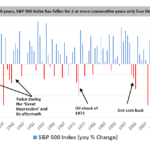India’s life insurance business is undergoing structural upheaval, and the pandemic at the beginning of the decade has accelerated the process. Positive structural trends in India’s insurance market include increased risk awareness among the general population and rapid digitalization of the user journey process, which ranges from policy comparison and purchase to claim filing.

According to Swiss Re, a worldwide reinsurer, the Indian life insurance business will grow at an unprecedented rate of 6.6% in 2022. And premium collection is predicted to exceed $100 billion for the first time, although global life insurance premium growth is expected to be moderate, with a 1.9% increase in 2023.
According to a KPMG estimate, the Indian insurance business is predicted to develop at a 15% annual rate over the next three to five years.
So, do life insurance stocks have a chance of becoming the next multibaggers in the Indian stock market, or are they just a fad to be avoided at all costs?
The factors covered in this blog post will help you make a decision.
India’s Life Insurance Industry: An Overview
India’s insurance sector is separated into two categories: life and non-life insurance, with 57 businesses in the industry and 24 in the life insurance vertical. LIC has the largest market share among the 24 businesses, at 68.57% until July 2022, with HDFC Life coming in second with 18.4% in new business received premium.
India’s life insurance business is developing at a quick rate of 32-34% per year, making it the world’s fifth largest life insurance market among emerging insurance nations. Some of the significant highlights of the sector include:
The life insurance-to-GDP ratio, an essential metric for measuring insurance penetration in the country, rose to 3.2% in December 2021 from 2.8% the year before.
Life insurers collected ₹3.10 lakh crore in premiums in FY22, up from ₹2.7 lakh crore in FY21. By FY31, India’s life insurance premiums are estimated to exceed ₹24 lakh crore ($318 billion).
India is Asia’s second-largest insurance technology industry, accounting for about 35% of the $3.66 billion in insurance-related venture capital funding. Furthermore, the internet market is expected to reach $1.25 billion by FY25, more than tripling the $365 million recorded in FY20.
During FY 2020-21, 28 million new life insurance policies were sold in India, with group non-single plans growing at a robust 6.3%.
The macroeconomic growth drivers
The variables listed below could lead to an increase in the user base in the Indian life insurance sector:
Demographic Advantage: According to UNFPA, India has the world’s largest young and adolescent population, which will continue to grow through 2030. In terms of life insurance market potential, there is a massive untapped market because the cohort will continue to grow until 2050.
Aspiring Middle Class: According to a World Economic Forum (WEF) report published in 2019, India will transition from an economy driven by the bottom of the pyramid to one led by the middle class. The middle class will account for over 80% of growth, up from 50% today. By 2030, the middle and upper middle classes are predicted to grow by 34% and 44%, respectively, while the low-income category would shrink significantly.
Rising GDP per capita income: In March 2022, India’s GDP per capita income was $2,231, up from $1,968 the previous year, and is anticipated to be about $5,700 by 2030.
High Mortality Protection Gap: This refers to the disparity in real life cover vs the required cover to ensure complete protection. India has the Asia Pacific’s biggest mortality protection gap (92%), with only ₹8 in savings and insurance for every ₹100. This provides life insurers with a big untapped market of outstanding potential over the next ten to thirty years.
The Microgrowth Drivers
The micro-growth drivers refer to the modifications that insurance companies made in respectively.




